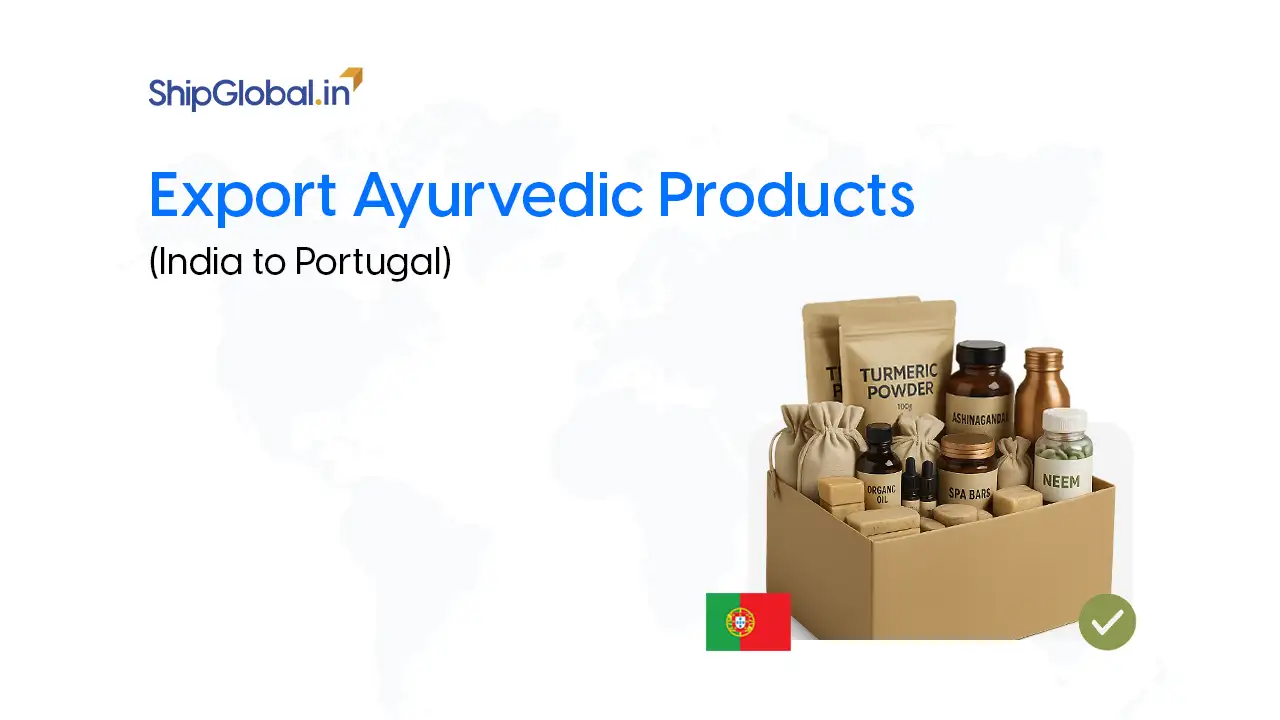If you’re an exporter in India looking to scale your production without breaking the bank on imported machinery, the EPCG Scheme might be just what you need. Short for Export Promotion Capital Goods Scheme, this government initiative helps you import capital goods at zero customs duty, making it easier to expand and improve your manufacturing setup.
However, it’s not a free ride! There are certain Export Obligations (EO) you must fulfill in order to take full advantage of the scheme. You commit to exporting goods or services of a specific value over a fixed period, which helps the government ensure that these concessions actually contribute to India’s export growth.
In this blog, we’ll cover everything you need to know about the EPCG Scheme—from EPCG license eligibility to the EPCG export obligations and the types of capital goods considered under the scheme. Whether you’re a small manufacturer or a seasoned exporter, this guide will simplify the complex rules, helping you understand how to import under EPCG scheme and effectively leverage the EPCG benefits.
What is EPCG Scheme
The Export Promotion Capital Goods (EPCG) Scheme is a flagship initiative under India’s Foreign Trade Policy that allows the import of capital goods at zero customs duty, provided exporters fulfill certain export obligations. These capital goods can be used for pre-production, production, and post-production activities.
This makes the scheme particularly attractive for those looking to upgrade their technology or expand production capacity while remaining cost-efficient.
Notably, the IGST on imports under EPCG was exempted up to 31st March 2022.
EPCG License Eligibility: Who Can Avail the EPCG Scheme
The scheme is open to a wide range of exporters, including:
- Manufacturer exporters, with or without supporting manufacturers.
- Merchant exporters tied to supporting manufacturers.
- Service providers, including Common Service Providers (CSPs).
Even new exporters can benefit from the scheme, with a major bonus: there’s no average export obligation for them.
EPCG license registration procedure with customs
The EPCG license registration procedure with Customs begins once the license is issued by the Directorate General of Foreign Trade (DGFT). The exporter is required to register this license at the port of import by submitting the license copy, bond or legal undertaking, and relevant supporting documents to the Customs authorities. After verification, Customs records the license in their system, enabling the importer to claim duty and GST exemptions on capital goods imported under the EPCG scheme.
What Capital Goods are Allowed Under EPCG
Capital goods are physical assets used in the production of goods or services. They are not finished goods sold to consumers but are instead used to manufacture or provide something else, like machinery, tools, or equipment. In the context of the EPCG Scheme and EPCG services, these are the assets that help boost your export capacity.
Here’s a list of what qualifies as capital goods for export production under the EPCG Scheme:
- Machinery, equipment, and accessories (for direct or indirect production)
- Packaging machinery
- Refractories for initial lining
- Refrigeration equipment
- Power generating tools or sets
- Machine tools
- Testing, R&D, quality, and pollution control instruments
- Tools for agriculture, aquaculture, animal husbandry, etc.
- Computer software systems
- Spares, moulds, dies, jigs, and fixtures
- Catalysts (initial and one subsequent charge)
This wide coverage ensures that almost any industry—whether manufacturing or service-based—can take advantage.
Can Capital Goods Be Sourced Domestically
Yes! You can procure capital goods from Indian manufacturers under EPCG. In fact, there are benefits:
- Deemed export benefits for domestic suppliers
- Reduced specific export obligation by 25%
- No GST on domestic sourcing (This was applicable up to March 31, 2022)
EPCG Authorization Process: A Step-by-Step Guide
The EPCG authorization process might seem daunting at first, but it’s fairly straightforward once you know the steps:
Step 1: Pre-Requisites for Applying for EPCG Scheme
- IEC (Import Export Code)
- Know Export Obligation details
Step 2: Prepare Documentation
Gather the following documents:
- IEC
- Digital Signature Certificate (DSC)
- Project report with cost details of capital goods
- Proforma invoice from the supplier
- Treasury Receipt Challan (if fee isn’t paid electronically)
- Self-certified copy of MSME Certificate / IEM / LOI / IL or Service Tax Registration based on products or service providers, respectively
- Certificate from a Chartered Engineer, as per the Appendix 5A format
- Certificate from CA/Cost Accountant/Company Secretary (Appendix 5B) to help establish the link between imported goods and products/services exported
Step 3: File Application on DGFT Portal
Login to the DGFT (Directorate General of Foreign Trade) portal and submit your online application in Form ANF 5A.
Step 4: Pay Application Fee
The fee varies based on the value of the capital goods you plan to import.
Step 5: DGFT Review
The regional authority of DGFT will review your application and may request clarifications.
Step 6: EPCG Authorization Issued
Once approved, you’ll receive the EPCG Authorization, allowing you to import capital goods at zero customs duty.
Note: If your application is complete, DGFT processes the license within 3 working days, according to the Foreign Trade Policy.
EPCG Export Obligations (EO): What You Must Fulfill
The EPCG Scheme comes with strings attached—mainly in the form of EPCG export obligations. Here’s what that looks like:
- You must export goods or services worth 6 times the duty saved on imported capital goods.
- This export obligation must be fulfilled within 6 years from the date of issue of authorization.
- In some sectors, like agro-based products and handlooms, the export obligation is reduced.
- You can fulfill your export obligation by exporting products manufactured using the imported capital goods or by earning foreign exchange.
Failure to meet export obligations can result in penalties, including paying back the saved duty with interest.
Types of Export Obligation (EO)
- Average Export Obligation (EO): Based on your past export performance. You must maintain your average exports in addition to fulfilling the specific obligation under the EPCG scheme.
- Specific Export Obligation (EO): Equal to six times the duty saved on the imported capital goods.
Are There Any Exemptions from Average Export Obligation?
Yes, exporters in the following sectors are exempted from maintaining average EO:
- Handicrafts
- Handlooms
- Cottage Industry
- Agriculture
- Aquaculture (including Fisheries) and Pisciculture
- Floriculture and Horticulture
- Poultry
- Animal Husbandry
- Carpets
- Jute
- Coir
- Sericulture
- Viticulture
Can Third-Party Exports Count Toward EO?
Yes, third-party exports are valid—provided that:
- The export documents (like shipping bills) mention both the authorization holder and the supporting manufacturer
- The EPCG Authorization number is also stated
Special EPCG Benefits for Green Technology Products
If you’re exporting green tech, there’s more good news. The scheme offers reduced export obligation of just 75% for:
- Solar and wind energy equipment
- Biomass gasifiers, waste heat boilers
- Water treatment plants
- EVs (motorcycles, mopeds, lorries, etc.)
- Solar cells, vapour absorption chillers, etc.
Pro Tip: You can claim other export incentives alongside EPCG like the MEIS benefit (Merchandise Exports from India Scheme).
Common Challenges and How to Tackle Them
- Delayed Installation: Make sure you stick to the installation timeline or request an extension in time.
- Incorrect Nexus Certificate: Always get your nexus certified by a Chartered Engineer or CA to avoid problems during DGFT audits.
- Export Obligation Confusion: Misunderstanding between average and specific obligations can lead to non-compliance. Keep clear documentation.
- Changing Foreign Trade Policy: Keep an eye on changes in FTP guidelines that may impact your EPCG license or obligations.
Recent Updates and Trends
- DGFT has moved the entire EPCG process online, including filing, approvals, and updates.
- A push is being made to simplify procedures for MSMEs and encourage service exports.
- The new FTP 2023 continues support for the EPCG Scheme, further extending certain relaxations for exporters.
- End-to-end online EODC/redemption with e-signed, QR-coded authorizations—no physical file submission.
- Tighter system integrations (ICEGATE/GSTN) for automatic validation of shipping bills and exporter details, reducing RA queries.
- Shift toward risk-based scrutiny and post-audit: compliant exporters typically see faster approvals and fewer document asks.
EPCG Reporting Requirements Made Simpler: A Closer Look
In a move to make life easier for exporters, the Directorate General of Foreign Trade (DGFT) has amended certain rules under Chapter 5 of the Handbook of Procedures (HBP) 2023, specifically for those operating under the EPCG Scheme.
Earlier, exporters had to submit an annual report on export obligation (EO) fulfillment by June 30 every year. But here’s the good news: this annual reporting requirement has now been scrapped.
Comparison Table of Existing and Revised Provisions for Annual Export Obligation Report
| Aspect | Existing Provision | Revised Provision |
|---|---|---|
| Reporting Timeline | Exporters had to submit an Annual Report by June 30 each year regarding export obligation fulfillment. | Report to be submitted only after the first 4-year block period, with continuous reporting till the end of the export obligation period. Submission is now online. |
| Documents Required | The report must include: – Shipping bill/GST invoice number – Date of export/supply – Description of product/service – FOB/FOR value for specific and average export obligation. | The online report submitted must include detailed information such as shipping bill or invoice numbers, along with certification by a Chartered Accountant, Cost Accountant, or Company Secretary to verify compliance with export obligations. |
| Late Fees | ₹5,000 per year for each authorisation in case of delay in report submission. | No late fee applicable for any delay in filing the report. |
This drastically reduces the frequency and pressure of reporting—especially useful for exporters juggling multiple authorisations. Overall, this update is all about reducing compliance burden and improving ease of doing business under the Foreign Trade Policy.
Why Choose EPCG Over Other Schemes
You might be wondering: why not go for other schemes like SEIS, RoDTEP, or Advance Authorization?
Here’s how EPCG stands out:
- Direct benefit through zero customs duty import of capital goods.
- Long-term benefit due to higher productivity and scale.
- Applicable for both manufacturers and service providers.
- Can be used along with other export incentive schemes (in some cases).
Final Thoughts
The EPCG Scheme is a powerful incentive that can significantly lower your capital costs and boost export competitiveness. Whether you’re a manufacturer, service provider, or merchant exporter, this scheme provides the tools to grow sustainably while meeting your global trade goals.
If you’re planning to apply, make sure to keep all documents ready, follow the timelines, and track your EO fulfillment closely. And remember, green tech exporters and new players enjoy even better terms!
Frequently Asked Questions (FAQs) on the EPCG Scheme
The (Export Promotion Capital Goods Scheme) EPCG allows Indian exporters to import capital goods at zero customs duty to improve production and boost exports. It also exempted IGST on such imports until 31st March 2022.
The scheme is available to:
-Manufacturer exporters (with or without supporting manufacturers)
-Merchant exporters (with supporting manufacturers)
-Service providers, including Common Service Providers (CSPs)
Yes, and here’s the good news—new exporters don’t have to meet average export obligations.
You can import a wide variety of capital goods, including:
-Machinery and equipment for production
-Packaging and refrigeration equipment
-Machine tools, testing instruments, software systems
-Tools for agriculture, aquaculture, and services
-Spares, moulds, dies, jigs, fixtures
-Catalysts (initial and one subsequent charge)
Yes, under the EPCG scheme GST exemption is available on eligible imports, subject to fulfilling the scheme’s conditions.
The Regional Licensing Authorities of DGFT issue EPCG licenses. You can apply online using Form ANF 5A at dgft.gov.in with a digital signature.
Average Export Obligation: Based on previous 3 years’ export average.
Specific Export Obligation: 6 times the duty saved, to be completed in 6 years.
For imports: Based on actual duty saved.
For domestic sourcing: Based on national customs duty saved on the FOR value.
Yes, the following sectors are exempt:
-Handicrafts, Handlooms, Carpets
-Agriculture, Aquaculture, Pisciculture
-Animal Husbandry, Poultry, Floriculture, Horticulture, Viticulture
-Jute, Coir, Sericulture
-Cottage Industry
Yes, if both the authorization holder and supporting manufacturer are listed in the shipping documents along with the EPCG license number.
Green technology products include:
-Solar and wind power equipment
-Electric vehicles (EVs)
-Biomass gasifiers
-Water treatment plants
-Waste heat recovery systems
-Vapour absorption chillers
-Solar cells
-Others
Under the EPCG scheme, Export Obligation (EO) for these products is reduced to 75%
Yes, EPCG benefits are in addition to schemes like MEIS or RoDTEP.
Submit Form ANF 5C with the necessary documents to your licensing authority for redemption.








